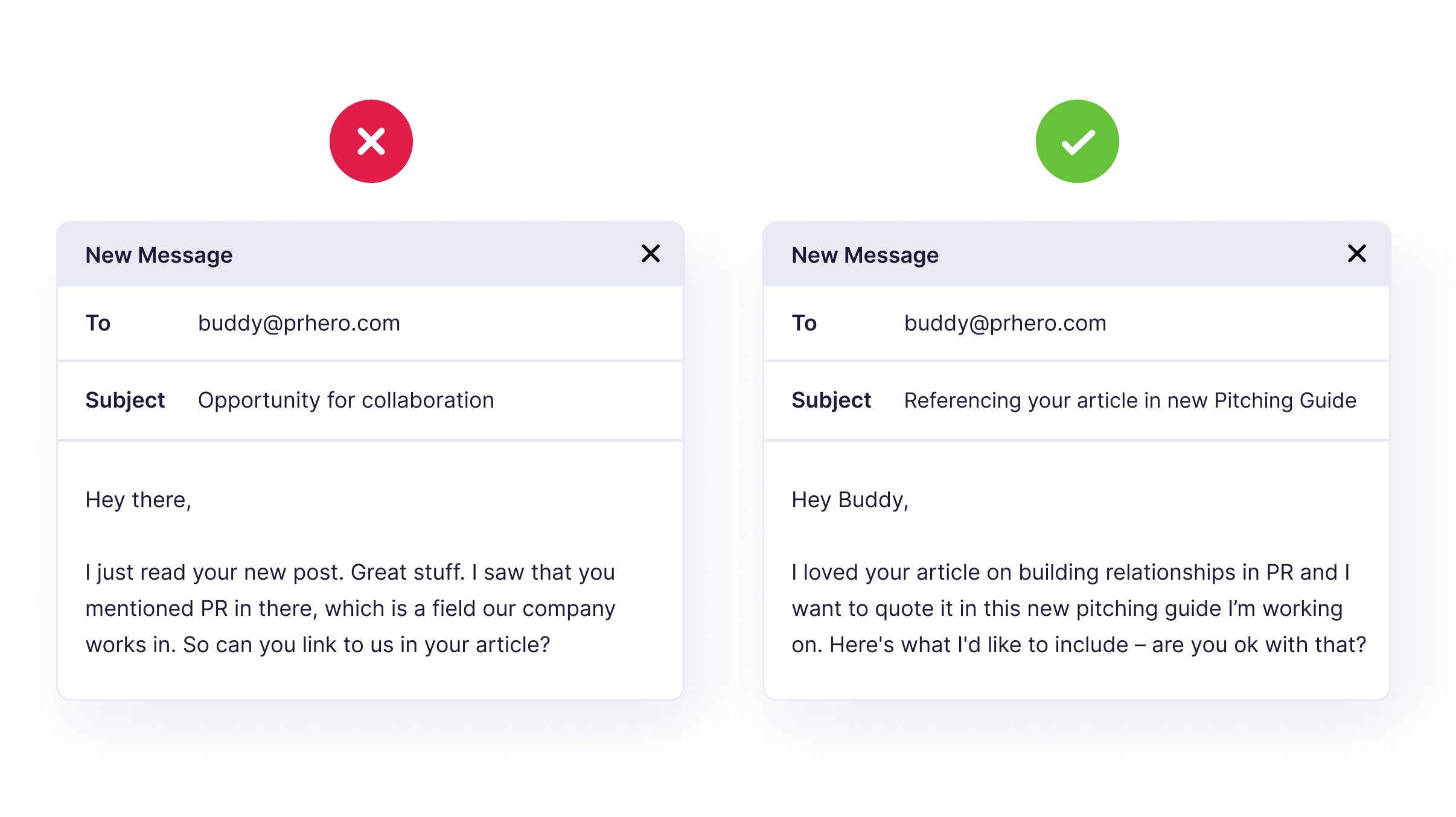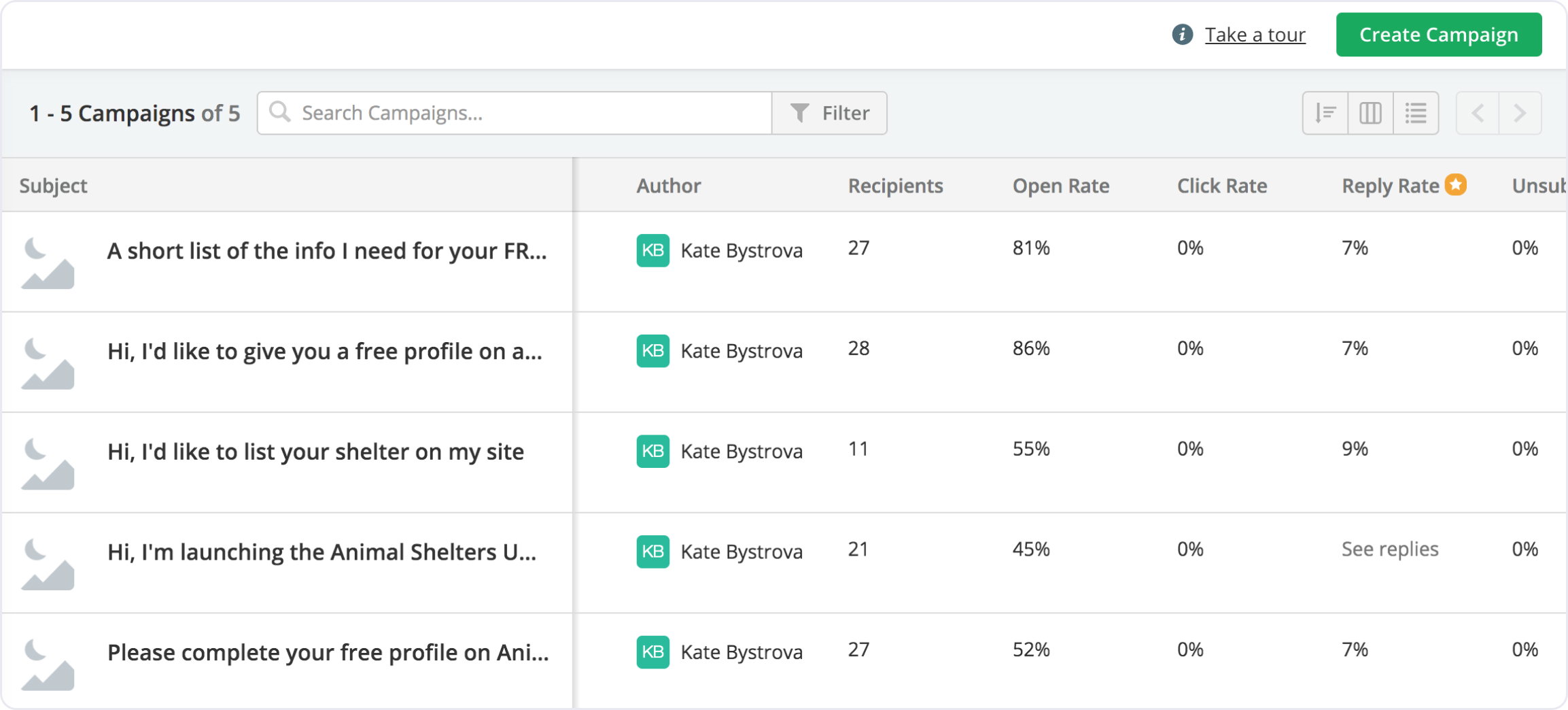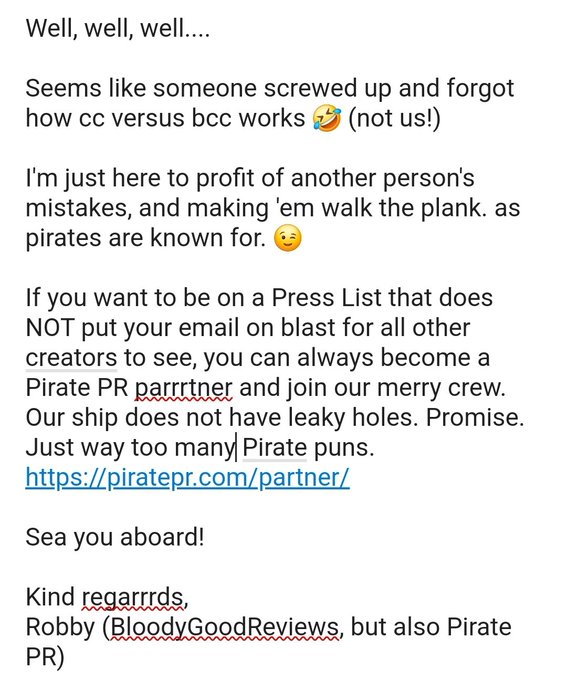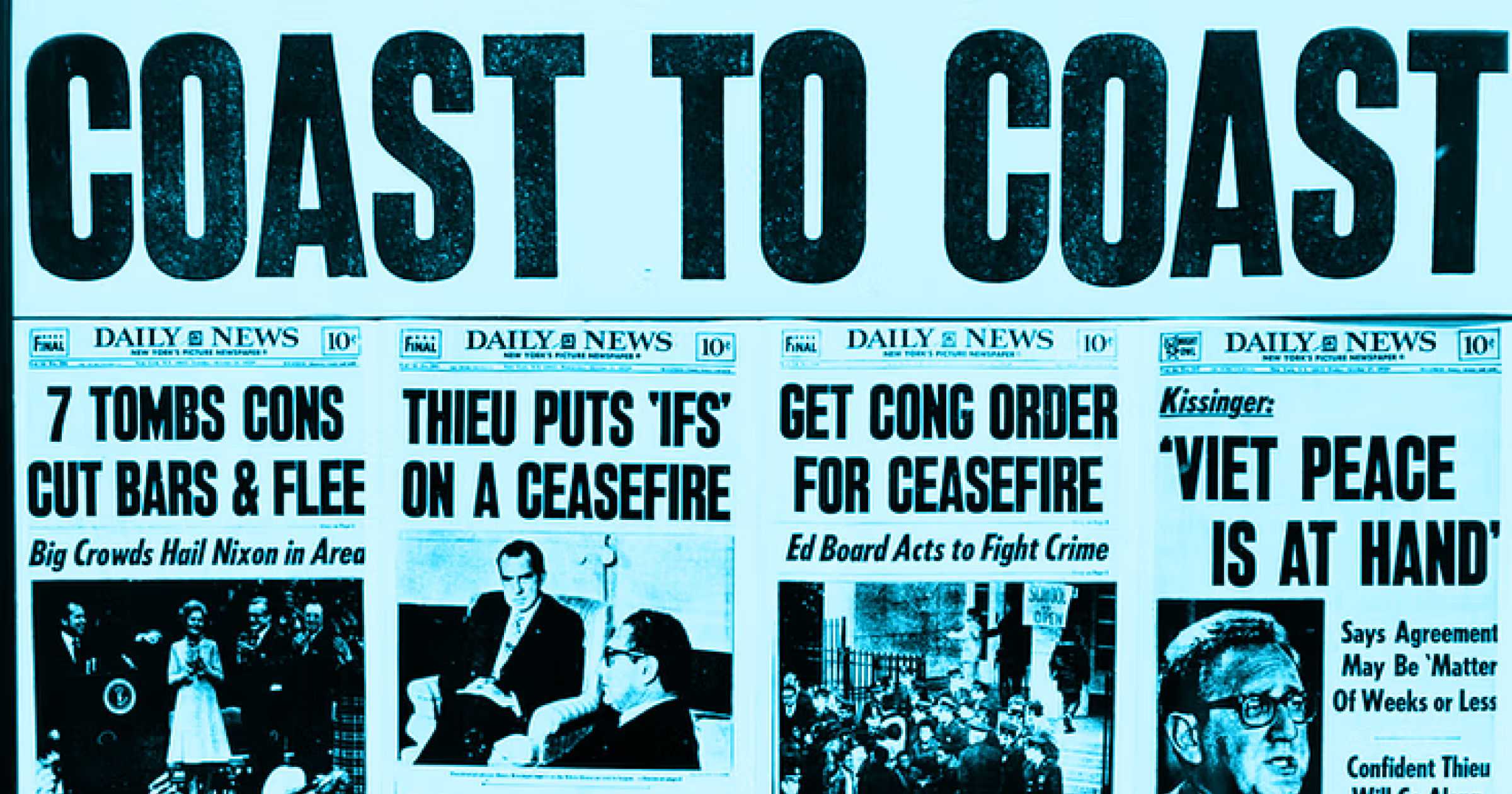How to Send a Press Release in 3 Quick Steps [2025 Update]
Step-by-step guide to sending a press release email that gets results, with data, examples, and templates to get you to pitch perfect.
Email pitching has become a necessary part of day-to-day PR, but it's not without its foibles. Even getting your prized contact to open that pitch you slaved over can sometimes seem like an insurmountable task. Let's see what we can do about that.
In this guide, we'll look at everything from how to improve your email deliverability, to what journalists themselves tell us they love (and hate) about the pitches they get, to some real-life examples. Strap yourselves in, folks, it's gonna be a ride.
Pitch journalists right now with a 14-day free trial
- Identify your most engaged contacts with our PR CRM
- Send personalized email pitches and campaigns
- Publish your press releases in a professional newsroom

Before you even think about hitting send on that email pitch, take a few steps back and try to get an objective overview of what you're doing and what you want the end result to look like.
Here are a few things to ask yourself before sending your press release.
One of the biggest mistakes brands make is to assume that people care about their updates. You know the sort of story I'm talking about – newswires are lousy with them. "Company X moves into a new office", "Company Y changes its brand font".
Shout-out to the PR sending me chasing emails about their press saying "I think this news is very important". Hello, yes, I don't agree, that's why I haven't done anything with it. 🙄🙄
So the first thing you need to ask yourself is, why should the audience of the person I'm pitching care about this story? Beyond that, think about why that audience should care about your story right now.
The best stories nail down the right audience, at the right time, in the right format.
If you nail even two of those three points you're likely onto a winner.
Reading the room
On the flip-side of knowing when to pitch is understanding when not to. What's happening among the audience you're addressing at the moment? What's the political climate like? Are we in the middle of a crisis? Before sending your press release, take a look around and make sure that what you have to say isn't tone-deaf to current affairs.
Great PR is worth investing in. So, take your foot off the gas and make a plan.
Do you want a feature in a specific publication? A guest slot on a podcast? To be seen as an authority in your niche by this time next year?
What does success look like to you?
Decide what you want to achieve and work backwards from there.
Once you know what you want to achieve in the long term, you can break it down into short-term goals and use those to inform your PR strategy.
"Media relations, at scale, is a Pyrrhic victory. Sure, you get your name in ink or on air, but to what end? If there’s no strategy behind it, it’s empty calories."
– Josh Sternberg, Media Nut newsletter
While you don't have to stick to a specific formula, there are certain elements that all good press releases tend to have. These are:
- An attention-grabbing but concise headline
- Date of news release before the introduction
- "What, where, who, when" succinctly summarized in the intro
- PR contact information
Those are the non-negotiables. On top of them, you might want to add:
- A press release quote
- A link to your press kit
That's the gist of it, but if you want to cross all the Ts and go more indepth, read our guide on how to format a great press release.
PR relies on you understanding your audience and how your story relates to them, as well as to the media. To do that, you need to keep up to date on what's happening in your niche, and consistently speak with various players therein. It's very much a long game of showing up and taking part.
Specialize: Find the niche you personally want to be the expert in and go deep – follow newsletters, engage with the best online PR communities, actively keep up with the conversation.
Participate: You can’t only be active in communities when you have something to sell; return to the mantra of give first, ask later.
Gather resources: As you encounter new people relevant to your niche, add them to a list that you can revisit later, whether that’s in your PR CRM, Twitter lists or somewhere else. Same for related posts and articles that may be of use further down the line.
Keep demonstrating that you understand your new contact's audience and can give them quality information. Be useful. Build up that trust.
Make them curious.
If you show that you are genuinely engaging with their content, being helpful, being active in their communities, they will start to recognize you as someone they can trust to provide information relevant to them.
They will take the initiative to click on your profile and find out who you are.
Do this 1 thing today as a PR pro: If you liked an article you read, tell it to the journalist! Choose to be nice, without interest, just tell them you enjoyed their writing.
If your new connection seems open to it, this is the perfect time to offer to have a call – not to pitch them, not to sell anything, but to introduce yourself in person, learn a bit more about who this person is and see if you have a natural rapport. It can do wonders to boost your relationship.
And if you have an opportunity to give them something of value well before you ask for anything for yourself, do it! Offering something like a link to their material in your own content can be a great way to start a relationship.

The key here, of course, is never to abuse that trust. It takes a lot of work to make sure you are consistently giving something of value, but it's the only way a mutually helpful, respectful relationship can work. There are no shortcuts.
Tip: Include links to your social media profiles in your email signature, whether that's LinkedIn, Twitter or somewhere else where you're active. It doesn't need to be a work account – we're all human; it's ok to show a little personality.
Ok, so you've got your press release signed off, a targeted list of media contacts, and all the media assets a journalist could hope for zipped up and sitting on your hard drive. You're ready to pitch.
So let's get drafting.
Here is a quick checklist to help you get the highest chance of landing in your journo's inbox, avoiding spam, and securing coverage.
Send your next pitch free with PrezlyIf you're sending a press release as part of your pitch, paste it into the body of your email. This has two advantages: it's easy for the recipient to skim without having to open any bulky attachments, and it becomes easily searchable in that person's inbox.
Link to your media assets, don't use attachments.
These can overload your contact's inbox and land your email into their spam folder – aka the pitch graveyard. Instead, host your media in an online press kit and link to it.
Don't password protect your assets, but use a secret unlisted URL to preserve privacy and keep it off Google, while making it easily accessible to journalists.
Whenever possible, host your press release in an online newsroom and include a link to it in your pitches.
This not only makes it super easy for you to make any adjustments to the page – like adding extra assets – after you hit send, it also help you get organic traffic for your story. Helping spread the word and giving you an extra metric to report on (more on that in Why your newsroom should be at the core of your PR distribution strategy)
If you're using Prezly to send your press release, you don't need to worry about the above: just create your press release (we even have a free press release template you can use), embed all your media and send. We'll take care of the rest :)
Just had this happen for the 4th time this year (only did the joke reply once) Devs: PLEASE don't just blanket email your contacts. At least use a tool like mailchimp, Google mail merge or something else. We personally use @Prezly and are very happy with it.
Someone F'ed up and emailed 150+ creators in cc instead of bcc and I was on the list (with my creator email) I replied all. Seemed like the pirate thing to do:
Pitch journalists right now with a 14-day free trial
- Identify your most engaged contacts with our PR CRM
- Send personalized email pitches and campaigns
- Publish your press releases in a professional newsroom

We've talked broadly about how to prepare your press release for distribution and how to format your email pitch, but what about those pesky details? How long should your subject line be? How many people should you pitch at once?
Because thousands of PRs the world over use Prezly to pitch the media, we were able to mine data from 15,976,113 emails that were sent through Prezly in 2019 to answer some of those burning questions. Here's what we found.
Looking at all ~16 million emails sent through Prezly in 2019, those with just 3 words in their subject line performed best.
Translating that to character count, the most successful subject lines consisted of just 10–20 characters, followed by 20–30 and then 0–10 characters.
Add to that the fact that subject lines get cut to around 50 characters on most mobile phones, and the takeaway is simply to keep it short.

And it isn't just the subject line…
Our data suggests that, on average, email pitches of <100 words perform up to 4x better than those with 300 or more.
Simply put: the shorter, the better.
Recent survey data from Muck Rack supports the claim that shorter is better: “92% of journos also said their ideal pitch length is capped at 2–3 paragraphs.”
This is why it can help to add only the introduction of your press release into your email pitch and link it to your online newsroom, where journalists can find the full story and any related assets – like your press kit.

Time to put the final pillar of emails to the test: images. Should you use them in your email pitch?
Two years before this study, we found that email pitches with no images performed best. It appears times have changed.
Looking at the data, press release emails that use 1–5 images score the highest clickthrough rate. Learn how you can share images and other media assets by using a digital press kit.
Read our guide on visual PR.

Pitching small-scale doesn't just give you the opportunity to try out different subject lines, it also allows you to carve out your niches and get better results. It makes sense: in order to send your audience something relevant, you need to understand who your audience is.
For this test, we looked at how the number of recipients tallied up against email clickthrough rate – making the assumption that the smaller the number of recipients, the more targeted the email pitch.
As you’d expect, the data showed that the more targeted an email campaign is, the higher its clickthrough rate.

Without proper tracking, you don't even know what's going on. You send the message and you don't know if someone opens your email or what's happening on the other side.
With the statistics from Prezly, we have a really clear picture of whether a person opens our email or ignores it, and use that information to improve things if this feedback is not what we expected.
For your most important pitches, go one-on-one.
Second best is to carefully research and compile an audience of 10 people or fewer. This audience will be niche enough by virtue of targeting so as not to require further personalization, gaining a 14% clickthrough rate regardless.
However, if you must send a campaign to 10+ contacts, use mail merge to personalize it at least a little.
💡 Tip: When using mail merge, go beyond the salutation. You can use dynamic fields to insert your contact’s name or other details anywhere in your pitch – use it to catch their attention mid-sentence or as you sign off.

If you have a lot of people to pitch, don't do it all at once. Work on creating a catchy subject line and use it to pitch 5, 10, 20 people who you think will find it interesting. Then check your open rate.
For most campaigns, 20% is considered a decent open rate; you should aim for 50–70%.
There's a lot of info available online on A/B testing subject lines; use it to refine and test yours.
A major thing to remember is that subject lines flop when there isn't a good audience fit. But all that research you did at the strategy stage should help you with that; go back to your notes, remind yourself of what your contacts are interested in.
💡 Tip: Use contact tags and niche segments to make it easier to target the right audience in future. Do certain contacts respond best to a particular no-nonsense style of subject line? Great – tag them with “use serious headline” so you remember next time.
For a close look at some examples, see what makes a great press release headline ▸

So, you'd like some local media coverage. The good news is that local media can often be easier to get (not to mention more rewarding) because it's already highly targeted and specific. If your press release is relevant to your local community, your area's media contacts will (likely) eat it up as long as you do one very important thing:
Make sure your news is a story.
Yes, you may be excited about your press release. Yes, you may want people to buy what you're selling, attend your opening, come to your event, or see your play. But if you don't frame your PR and marketing as a story to local media, it just sounds like an advertisement. And the local news is here to do publicity. They're here to tell stories and engage readers.
So, when you sit down to draft your emails to local media, lead with a story. All of the above advice works for local media (and works very well) as long as you are constantly asking yourself:
- How is this news?
- How is this interesting?
- Would I want to read this in the newspaper or watch it on my local TV station if I weren't directly involved?
- What value does this provide the news outlet?
- How can I localize this story?
Working with local media is a fantastic way to create lasting and lucrative press relationships, as long as you're constantly leading by providing value and not simply expecting free press.
If you have a specific paper in mind that you or your client would like to be featured in, here are some steps to take:
It sucks to put a ton of time and effort into getting featured by a newspaper or publication, only to find out they don't run stories like the one you'll be pitching.
Newspapers get a lot more PR than most people realize. Stand out from the crowd by making sure your pitch is easily and quickly identified as a story that is of particular interest to the readers.
Most newspapers have a policy around submissions with clearly defined requirements. Check the website and see if they have a specific email address dedicated to submissions or a preferred way of receiving PR.
Nothing gets PR thrown in the bin quite like disregarding the basic requirements of submitting. And also, don't send your PR to every single contact at the newspaper. That is seen as annoying more often than not.
There is a right way and the wrong way to follow up. The right way is helpful and breezy. The wrong way is manipulative and annoying. Before hitting the send button on your follow-up email, read it back from the perspective of the publication and make sure it doesn't sound like the latter.
Here are some tips on how you can inform how you follow up:
Try Prezly for free todayYou can download the separate pages as image files from the gallery below, or as a PDF attachment:
Even with years of experience under your belt, it can be easy for your press release email to miss the mark. To minimize the chances of getting it wrong, read through it and ask yourself:
- Who is the audience of the person I'm pitching? Why should my story matter to them?
- Is the story clear from the subject line?
- Is the email easy to read?
- Could I make it shorter?
- Have I given them an easy way to get in touch?
Let's look at a couple of specific media pitch examples below to quickly see what separate a good press release email from a bad one.
Subject line: [The main angle of your story including any differentiators (e.g. "Samples available")]Send your next pitch free with Prezly
Hi [First name],
I'm a big fan of your articles on [website/topic]. I noticed that over the past few weeks, you've been focusing a lot on [trending topic], and specifically [niche relating to your story].
Given that your readers [say how your story relates to them], I think they would be interested to find out [the main angle of your story].
I have the full press release here [link], but the gist is:
- [Bullet 1]
- [Bullet 2]
- [Bullet 3]
There are related hi-res images ready to go in this press kit [link], and if you'd like to talk about this or [offer of opportunity such as an interview], you can reach me by phone/Whatsapp at [number].
Thanks,
[First name]
[Your signature with full contact details]
Why this pitch works:
- It's short
- The subject line presents the story as it relates to this particular journalist, and includes information that differentiates it from the other pitches in that person's mailbox
- Written in conversational first-person
- Offers rather than demands
- Most people just pretend to admire the journalist's work; giving details shows that you actually follow it
- Demonstrates that you understand their audience by clearly stating how your story relates to their interests
- Links to the full story and media assets upfront, so the journalist doesn't need to chase you
- Gives them an easy way to get in touch
Saying that, this pitch could be even shorter.

Bonus tip: Use an audience research tool like SparkToro to find out what other topics the readers or followers of a particular outlet are into, and use that information to curate your pitch and create a targeted media list.
Subject line: Product launch
Hello dear,
I hope this email finds you well. I really enjoy your articles on BBC.com/blog. I believe this story will be of interest to your readers.
In today's fast-changing world of... [generic copy-paste from press release that spans several sentences in a single paragraph].
Reach out if you need more information. If you are not the right person to speak with about this please pass this email to the correct person.
Kind regards,
[signature]
Why this pitch doesn't work:
- No personalization, plus "Hello dear" screams spambot
- No summary of story
- Hard to believe that you're actually familiar with the journalist's work
- Tone is artificial and the flow confusing
- Journalist has to contact you for more information, meaning they couldn't start writing about your story immediately even if they wanted to
The above might seem like a silly example, but you'd be surprised – just look at this nice, concise marketing pitch I once got:
People Who Think I'm Called Katelyn: A Thread "I loved your article on CSR. Would you mind linking it to my post on The History of Shoes?"
How do you miss the mark so badly as to link shoe history and corporate social responsibility? My guess is that someone bought bad contact details from an online media database. Rookie mistake.

Buying lists of media contacts has become a PR norm. But how effective is it really? And are you violating GDPR by doing it?
One of the best places to get the lowdown on how to pitch well is from journalists themselves. Which is why we asked them.
You can watch our full hour-long interview with journalists Kelsey Ogletree and Holly Brockwell over at PR Roundtable: How writers want to be pitched. Here are the top 6 clips:
Pitch journalists right now with a 14-day free trial
- Identify your most engaged contacts with our PR CRM
- Send personalized email pitches and campaigns
- Publish your press releases in a professional newsroom

How can I effectively measure the success of my press release email pitch beyond just open rates and clickthrough rates?
Understanding the true impact of your press release email pitch requires delving deeper than just open rates and clickthrough rates. While these metrics offer valuable insights into initial engagement, it's equally important to think about what recipients do after they read the pitch. Are they following up with you for more information? Are they sharing your story within their networks or on social media? Are they literally screaming it from the rooftops? By tracking these behaviors and analyzing their implications, you can gain a more comprehensive understanding of the effectiveness of your pitch. Take a look at our PR tools article for some apps that can help.
Can you share any specific examples or case studies to illustrate the successful implementation of the strategies outlined above?
Yes! You can have a browse of some pitching examples here; there's also more details on press release distribution strategy here (now with more gifs!). I'd also recommend following industry publications and more specifically, PR communities to stay in the loop on what does and does not work for email pitching (and pitching in general). Other people are an invaluable source of experience and cautionary tales, so if in doubt, ask. More often than you think, your peers will be only too happy to help.
What are some common mistakes to avoid when crafting a press release email pitch, and how can I ensure that my pitch stands out among the multitude of emails journalists receive?
That's literally what this article was about. Did you just scroll down to this TL;DR area? I mean… sure, I can respect that. You're busy. Makes sense.
Ok, well the lowdown is that writing a great press release email pitch that truly stands out amidst the sheer inundation of emails journalists receive requires two things: knowing their audience, and the self-discipline. The first will inform the angle of the brand story you pitch and will ultimately be a massive determiner of your success. The latter will stop you from going on and on, help you stay concise, and hopefully prevent you from following up 8 minutes after sending that first email.
One common mistake to avoid is generic, cookie-cutter pitches that fail to demonstrate a genuine understanding of the recipient's interests and needs. Instead, strive to personalize your pitch, showcasing how your story aligns with their beat or audience. Be mindful of the length and tone of your email, opting for concise, engaging language that captures attention and prompts action. By avoiding these pitfalls and prioritizing authenticity and relevance, you can increase the likelihood of your pitch actually resonating with journalists and you winning some kickass coverage.
Want more press release pitching inspo sent straight to your inbox on a semi-regular (but not obnoxious) basis? Sign up for the Prezly Academy mailing list!
Or even better, why not try our press release software?
Ready to start growing your media reach?
With Prezly you can publish press releases online, and share them directly with journalists. 14-day free trial, no credit card required.








.jpg)

.jpg)